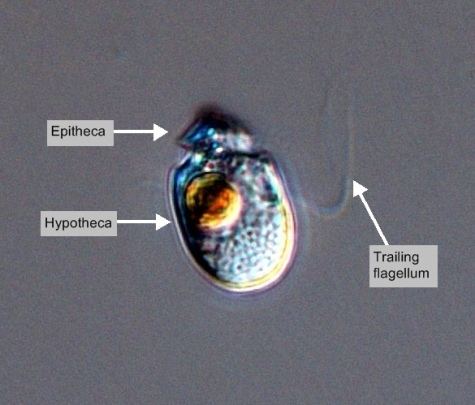Phylum Dinoflagellata Rank Species | Family Gymnodiniaceae | |
 | ||
Similar Amphidinium, Prorocentrales, Karlodinium, Oxyrrhis marina, Gymnodinium | ||
Oxyrrhis marina feeding on amphidinium carterae
Amphidinium carterae is a species of dinoflagellates. It was first described by Edward M. Hulburt in 1957, and was named in honour of the British phycologist Nellie Carter-Montford. The type locality is Great Pond, Barnstable County, Massachusetts, USA. It is a toxic species.
Contents
Distribution

Amphidinium carterae is known from both sides of the North Atlantic Ocean, the Bay of Fundy, the Gulf of Mexico, the Baltic Sea, the North Sea and the Mediterranean Sea. It also occurs in Brazil and New Zealand. It is found in shallow waters in coastal bays and estuaries.
Ecology
Amphidinium carterae is a toxic species and sometimes causes harmful algal blooms which are associated with marine, toxin-derived disease. The presence of this species adversely affects the embryonic development of sea urchins for example.
Use in research
Amphidinium carterae is a photosynthetic organism and can be cultured in the laboratory under suitable conditions of temperature and light. It is a peridinin-containing dinoflagellate, and has been used as a model organism for research. It has a highly unusual chloroplast genome with genes mounted on many small minicircle elements, and an unusual pattern of RNA metabolism.
References
Amphidinium carterae WikipediaPic Credit: Phyto'pedia
